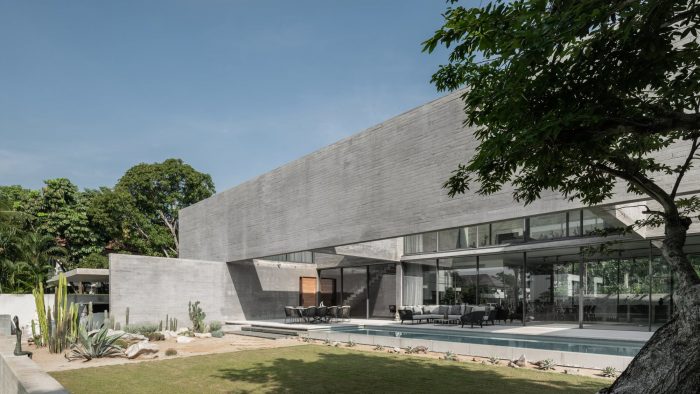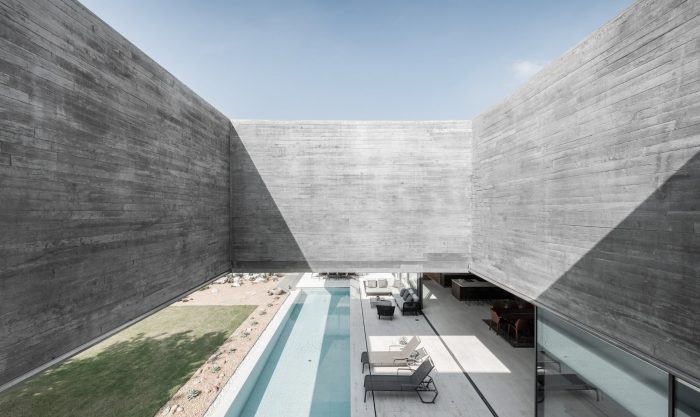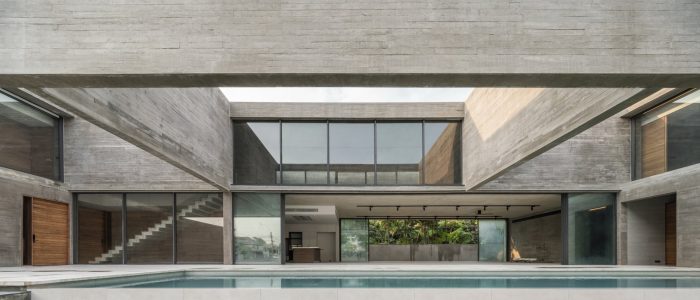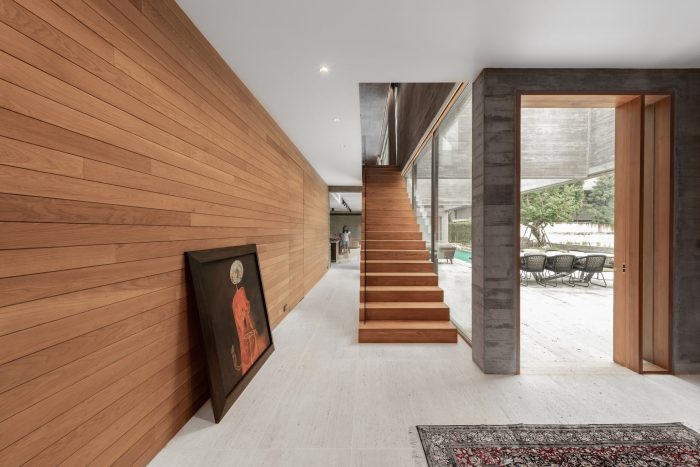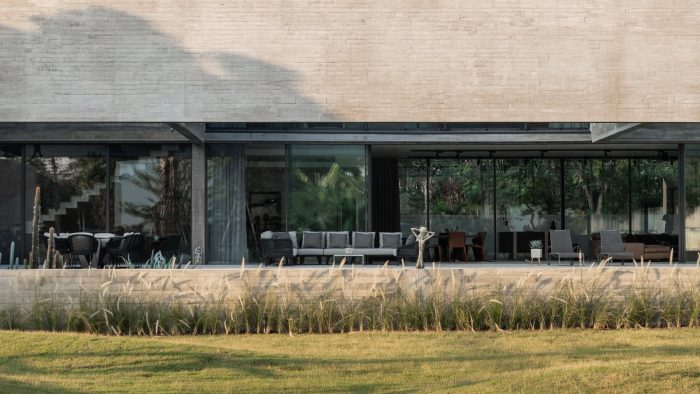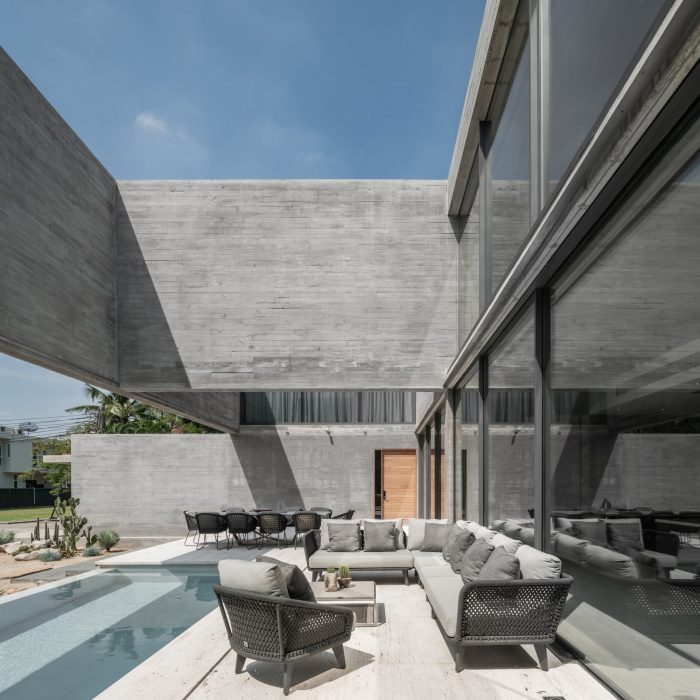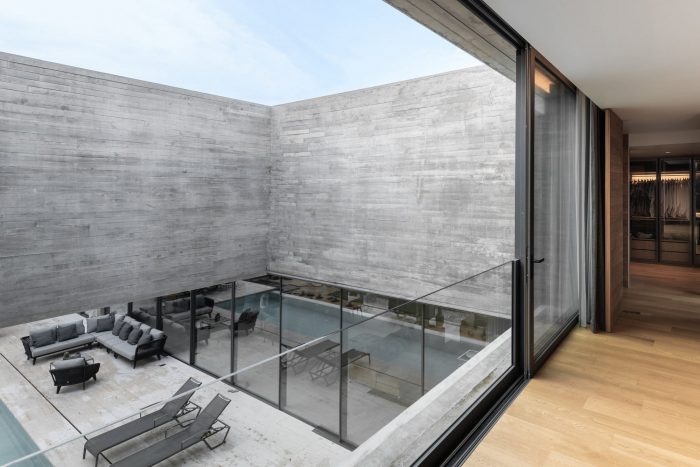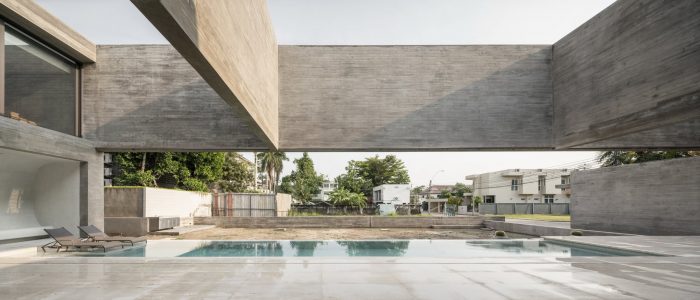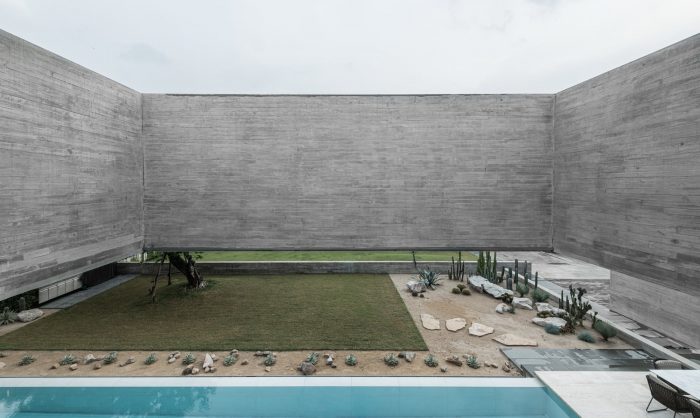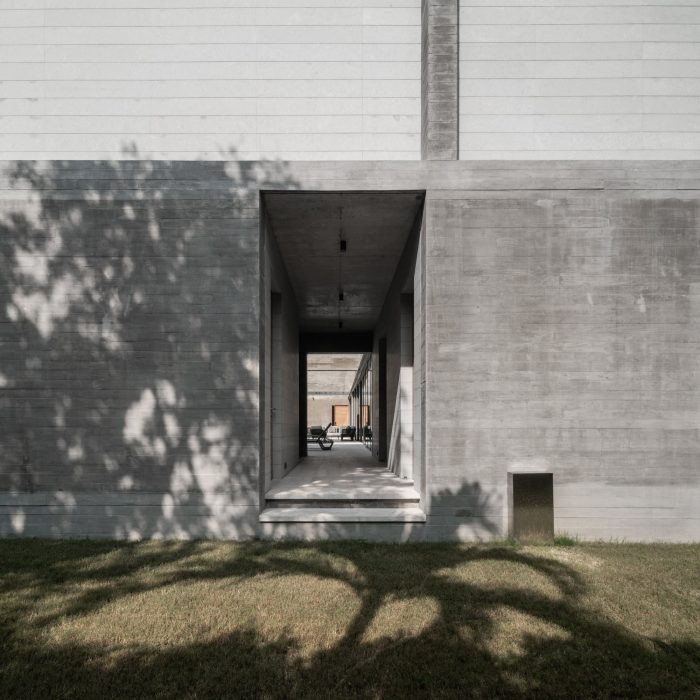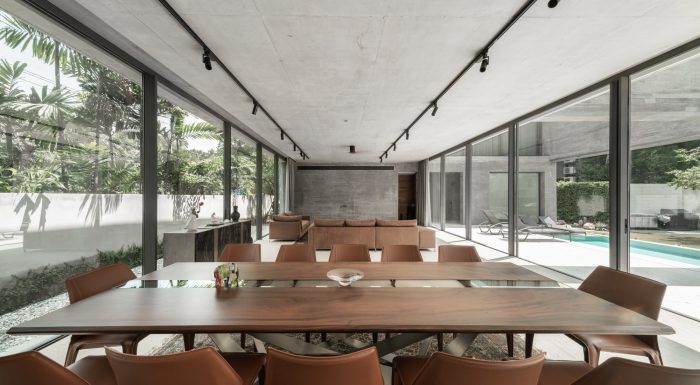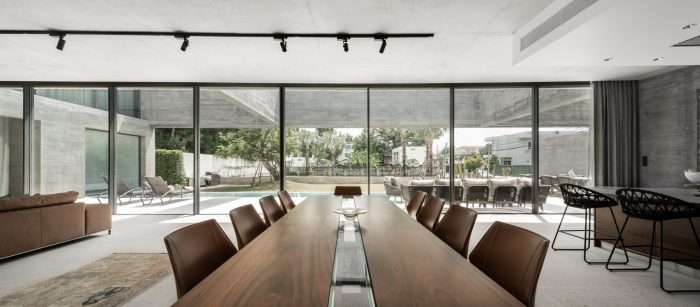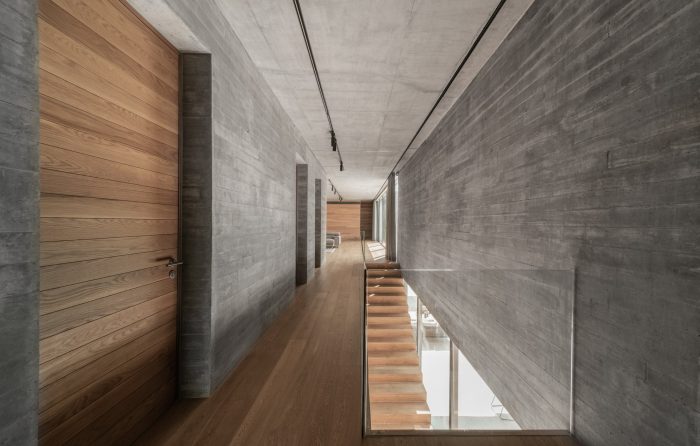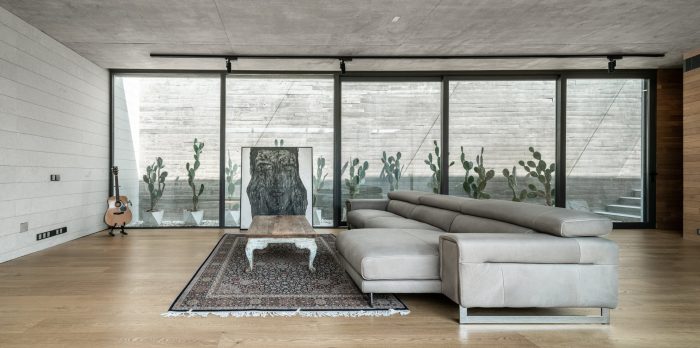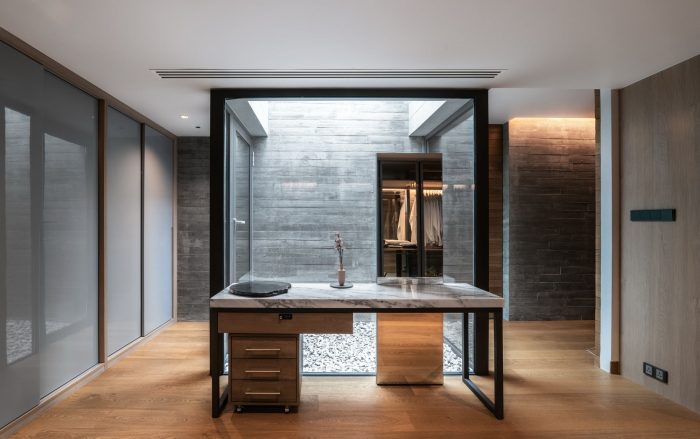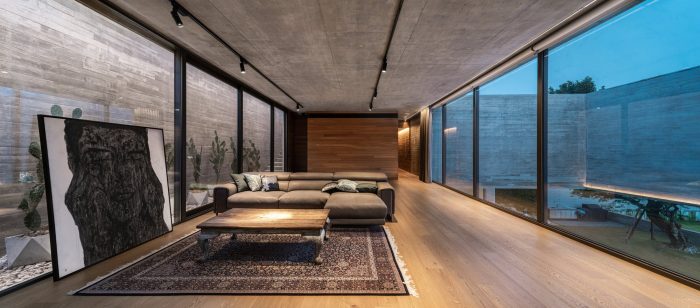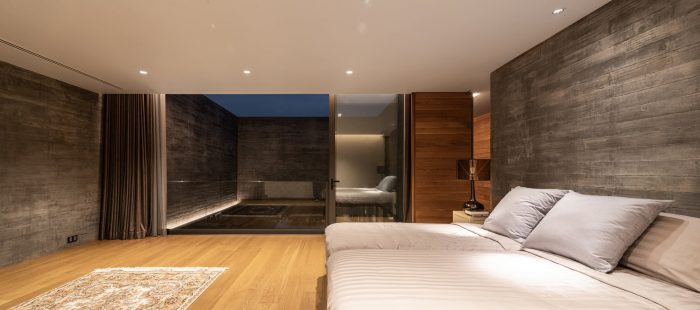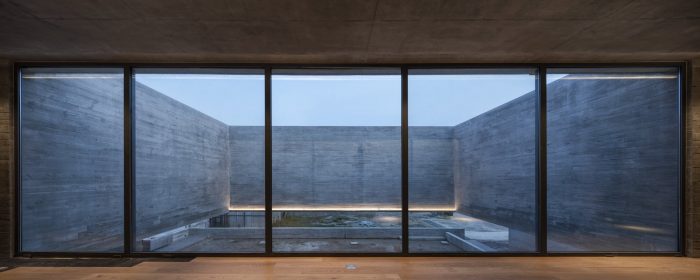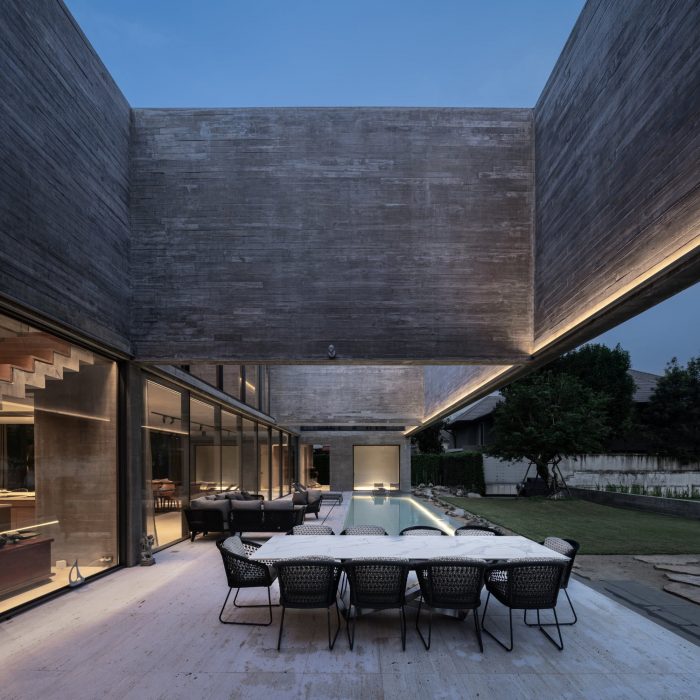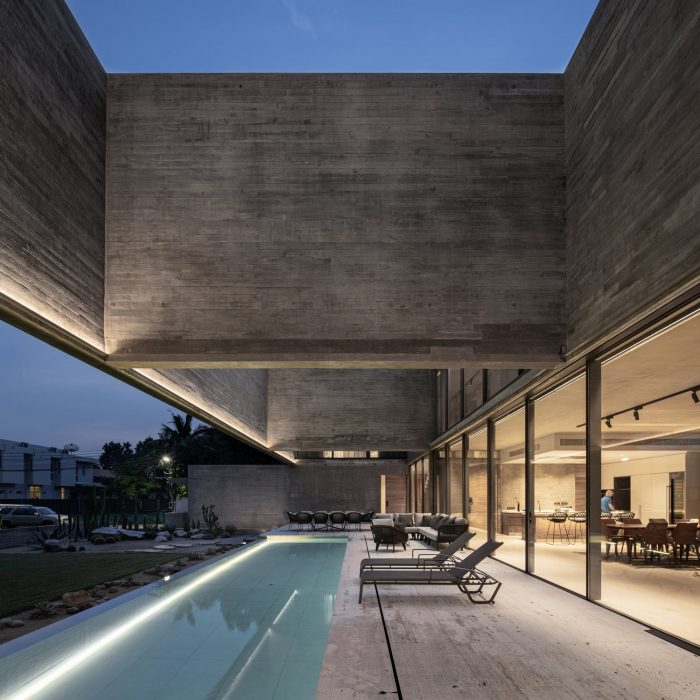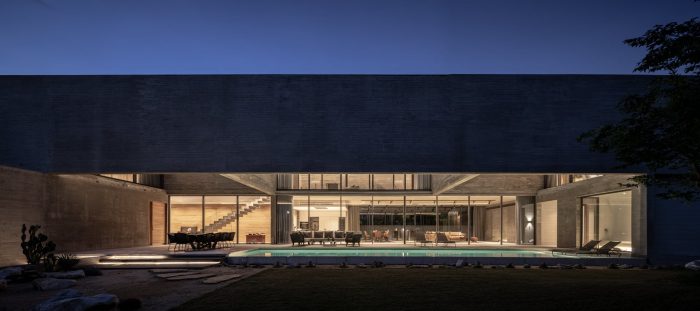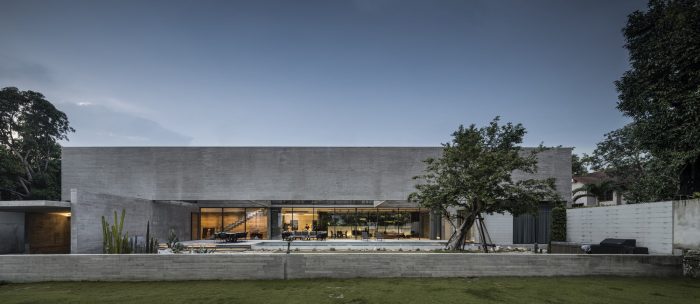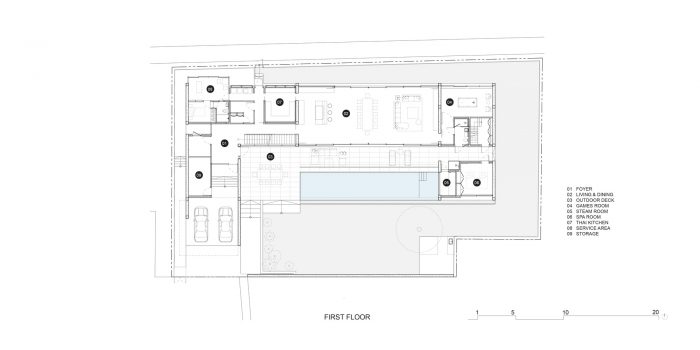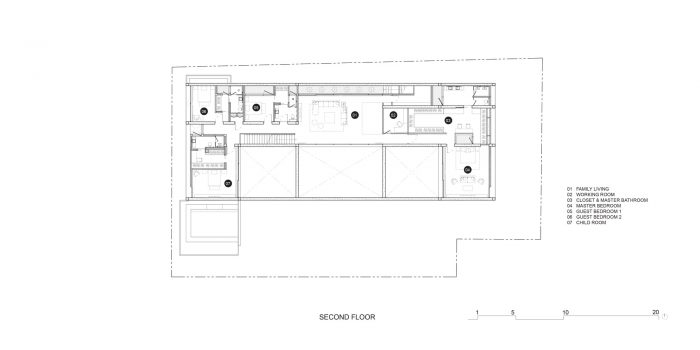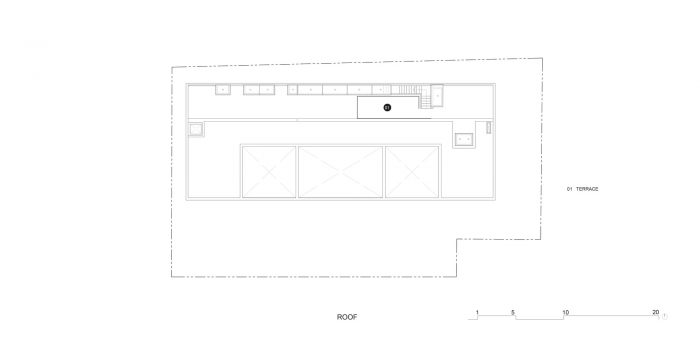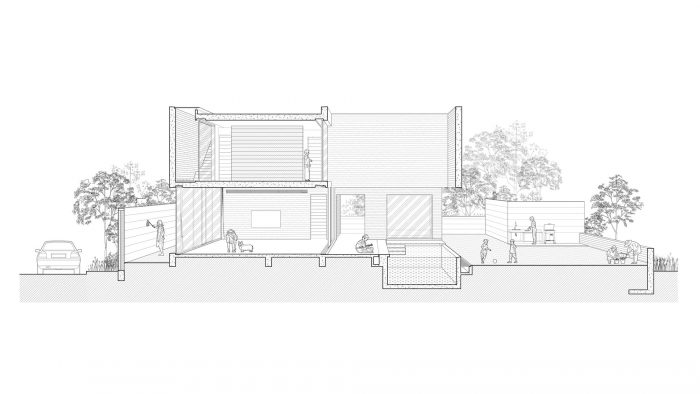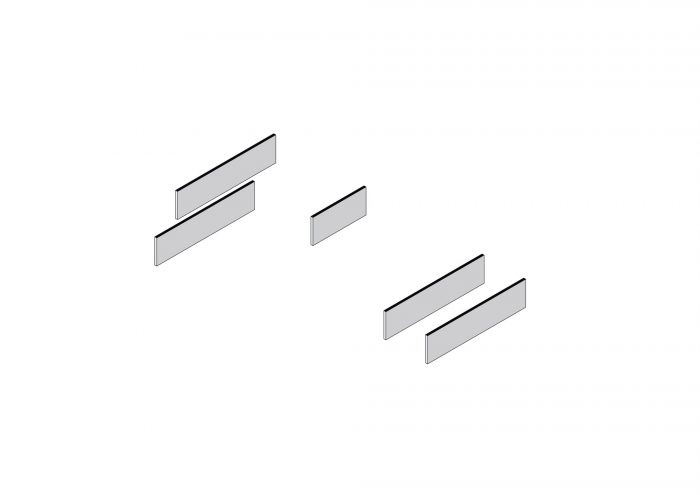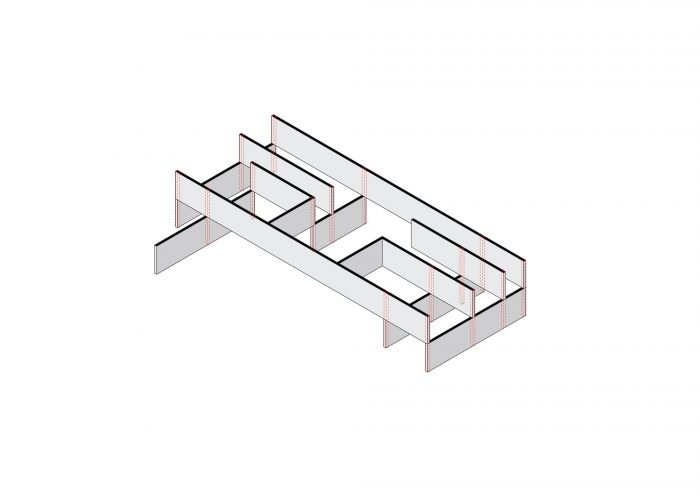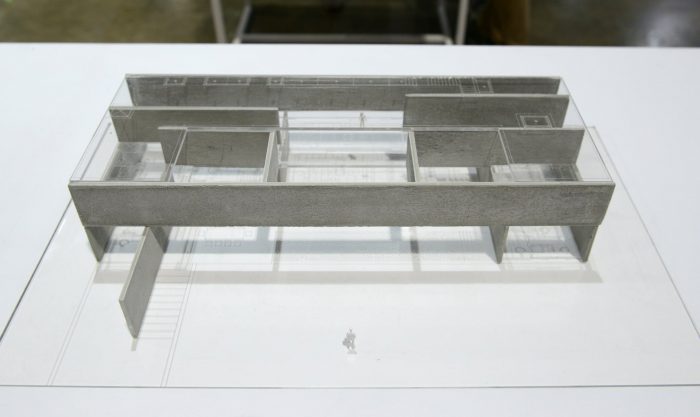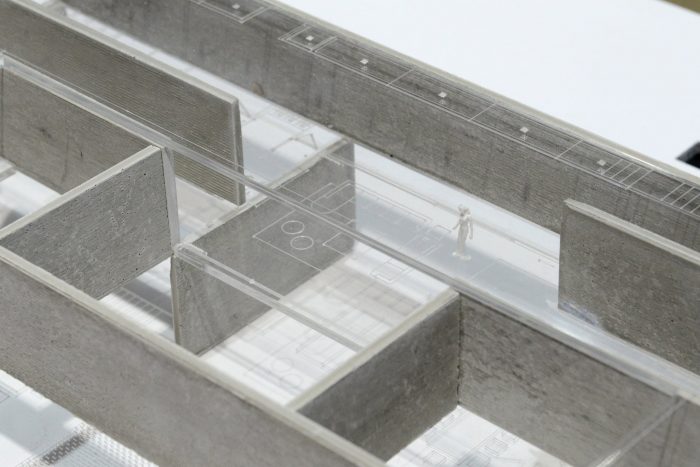Casa de Alisa是一个位于泰国暖武里的两层楼住宅。混凝土的材料和结构能力,是这个项目的基础概念。里面的空间纯粹是由混凝土结构墙来构思的,这些墙框住了室内的空间。这些平面形成了一个建筑,将生活空间与周围环境隔离开来,同时将 “选定 “的自然环境框住,并在其中包含隐私。在内部,由于这些平面将下面的混凝土、水和花园以及上面的天空结合在一起,紧缩感得到了加强。
Casa de Alisa is a two-story residence located in Nonthaburi, Thailand. Concrete, in its material and structural capacity, is the founding concept of this project. The spaces within are conceived purely by the structural concrete walls that frame and contain the interiority. These planes form an architecture that shelter the living spaces from the surrounding context while framing the ‘chosen’ nature and containing privacy within. Within, the sense of austerity is enhanced as these planes bound the concrete, water, and garden below and the sky above, together.
在为周围社区提供视觉屏障的同时,混凝土浇筑的平面也起到了缓冲作用,为直接毗邻场地的公共道路提供了声音屏障。分为两层,地面上的半公共生活区由各种门槛组成,模糊了花园-游泳池-生活和室内外空间之间的界限,而上层则是居民的私人住所。表达内部程序和功能的平面划分了每个生活区,以保持隐私并给每个边界空间以区别。相反,二楼37米的大跨度悬臂平面不仅是住宅的主立面,而且是将每个住区联系在一起的一致的 “背景”。
While providing a visual barrier towards the surrounding neighborhood, the cast concrete planes also act as a buffer, providing a sound barrier from the public road directly adjacent to the site. Divided into two levels, the semi-public living quarter on the ground compose of various thresholds that blur the lines between garden-pool-living and interior and exterior spaces, while the upper level consists of private quarters for its residents. Expressing the internal program and function, the planes divide each living quarter to maintain privacy and give distinction to each bounded space. Contrarily, the 37 m. long-span cantilevered plane on the second-floor act not only as the main façade of the residence, but a consistent ‘backdrop’ that ties each of the quarters together.
裸露的混凝土的物质性在各个方面都得到了利用;木质框架在混凝土上留下了其纹理的印记,作为对施工过程的永久提醒,而其纹理则通过采光井和天窗得到加强。在现场浇筑,对模板和纹理进行了各种实验,以确定住宅的基本材料和特征。
The materiality of exposed concrete is utilized in all its aspects; the wood framework leaves an imprint of its grain on the concrete as a permanent reminder of the construction process, while its texture is enhanced with lightwells and skylights. Cast on site, various experiments on formwork and texture were carried out to establish the fundamental material and character of the residence.
地面上的混凝土平面垂直于场地,而二楼的墙壁则在相反的轴线上相交。这两个相对的平面之间的交叉点提供了整个项目的主要结构系统。这种纯粹的结构组成允许建筑被减少到绝对的最小,同时也允许有效的施工和装配时间。其结果是一个在外观上有些单一的建筑,因为它的混凝土板似乎是从地面上悬浮起来的,同时在其内部包含了一种地方和家庭的感觉。
The concrete planes on the ground level sit perpendicular to the site, while the walls on the second floor intersect at the opposite axis. The point of intersection between these two opposite planes provides the main structural system throughout the project. This pure structural composition allows for the architecture to be reduced to its absolute minimum, while also allowing for efficient construction and assembly time. The result is an architecture that is somewhat monolithic in its exterior, as its concrete slabs appear to be levitating from the ground while containing a sense of place and home within its interiority.
Architects: Stu/D/O Architects
Area : 1545 m²
Year : 2019
Photographs :DOF Sky|Ground, Sofography
Lighting Designer : in Contrast Design Studio
Structural Engineer : Ittipon Konjaisue
Mechanical Engineer : MEE Consultants
Contractors : D-Innova
Project Team : Apichart Srirojanapinyo, Chanasit Cholasuek, Panfan Laksanahut, Win Rojanastien
Consultants : Engineering Plus
Client : Kenneth Bodahl
Site Area : 1115 m2
City : Nonthaburi
Country : Thailand


